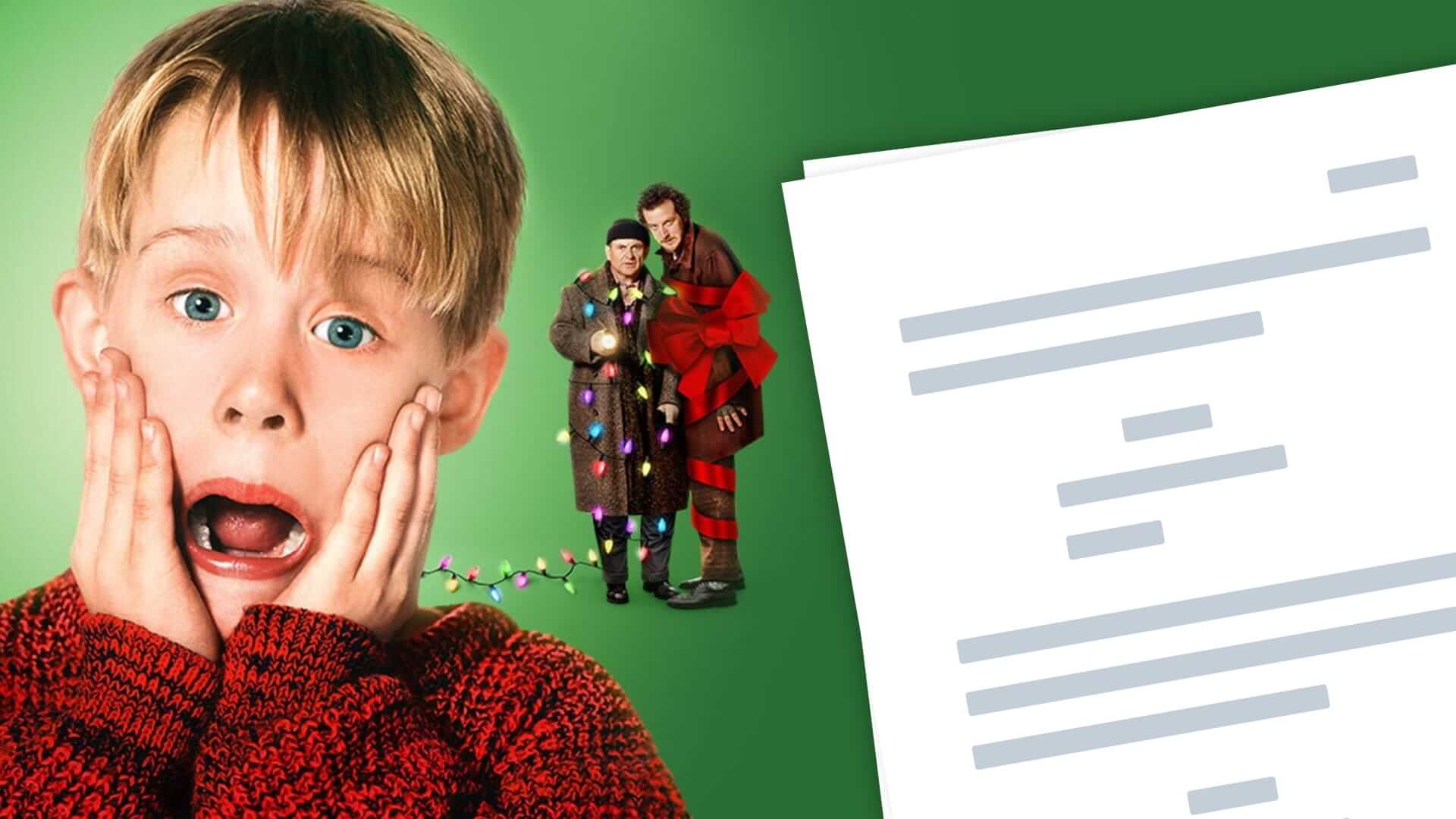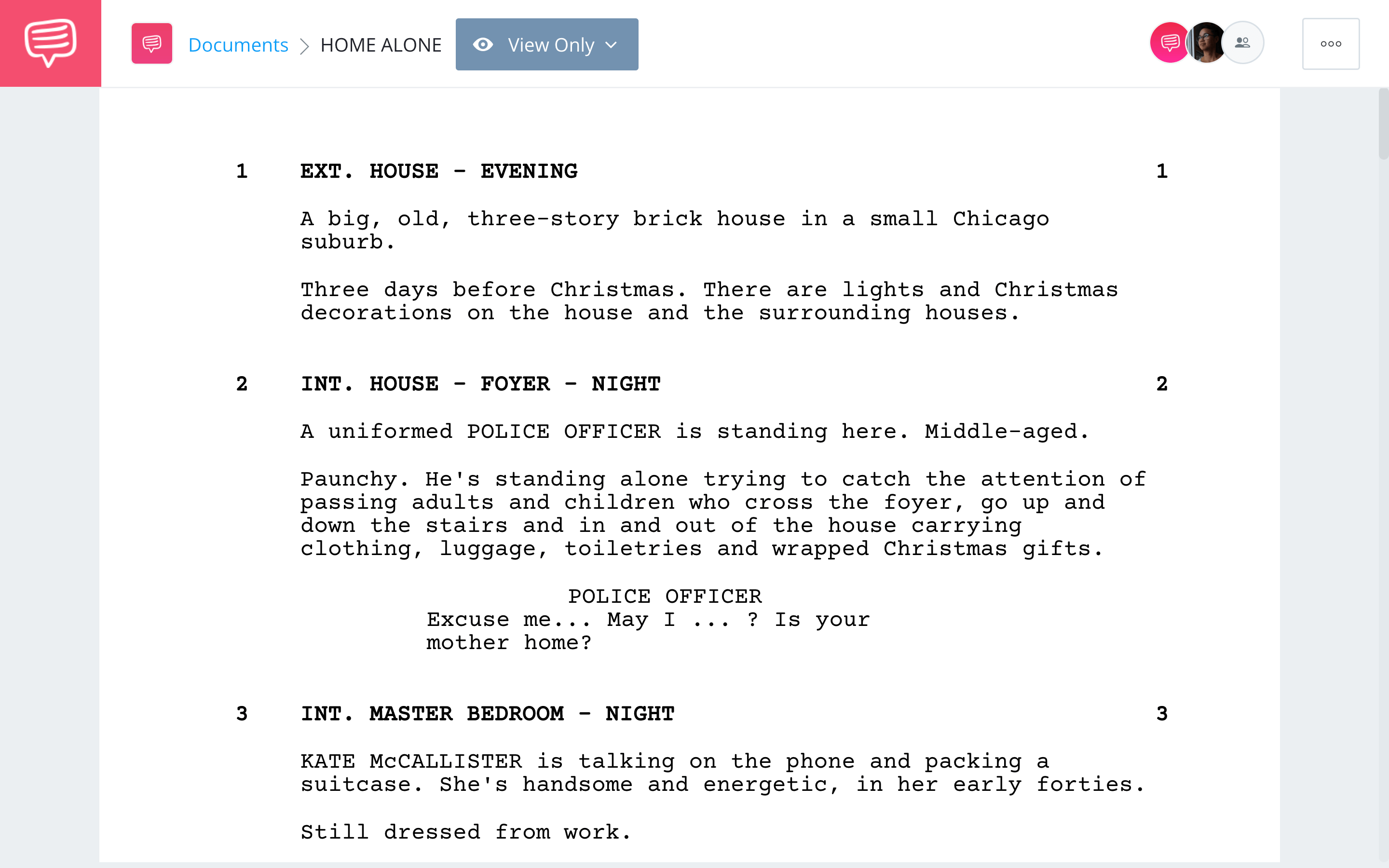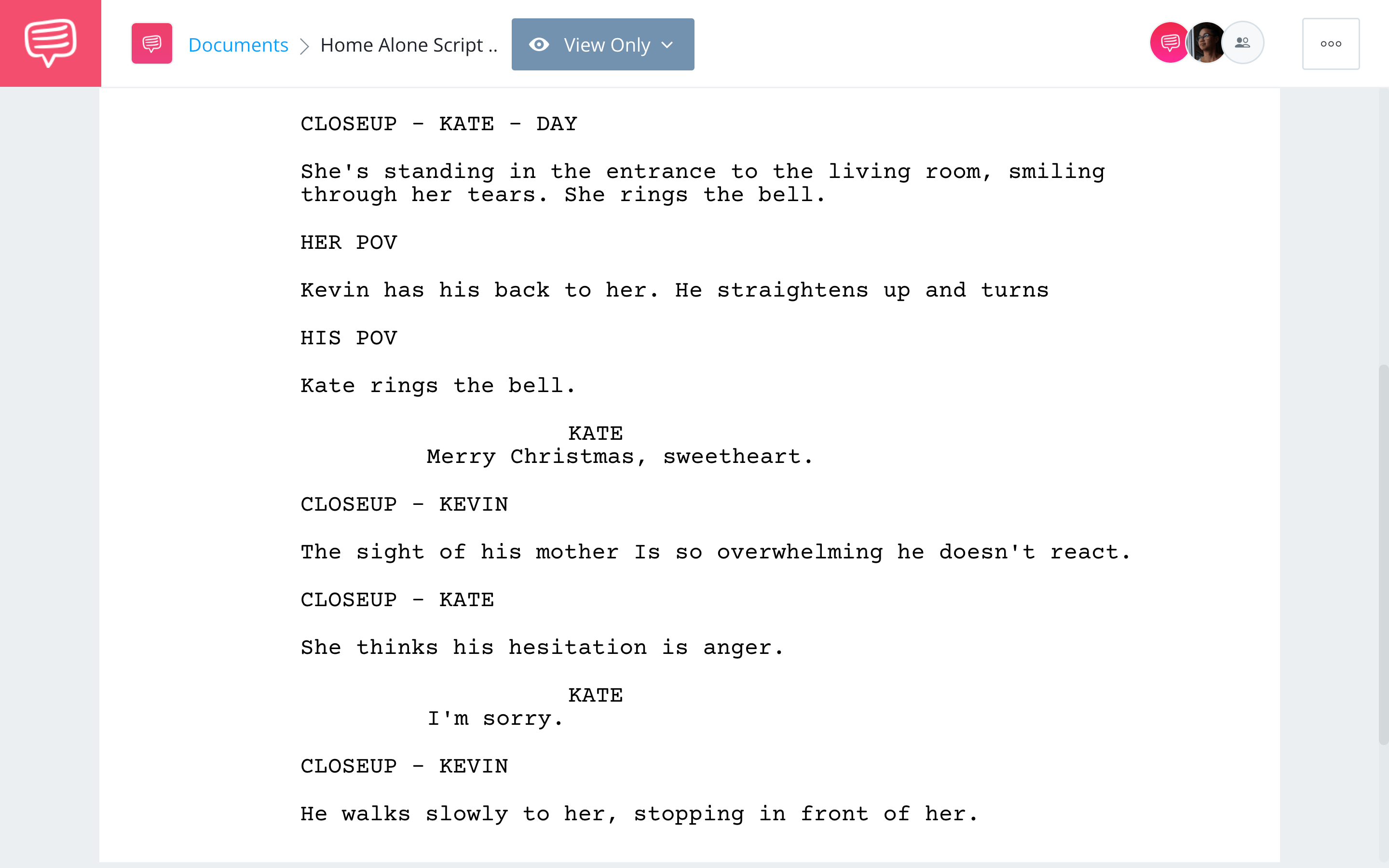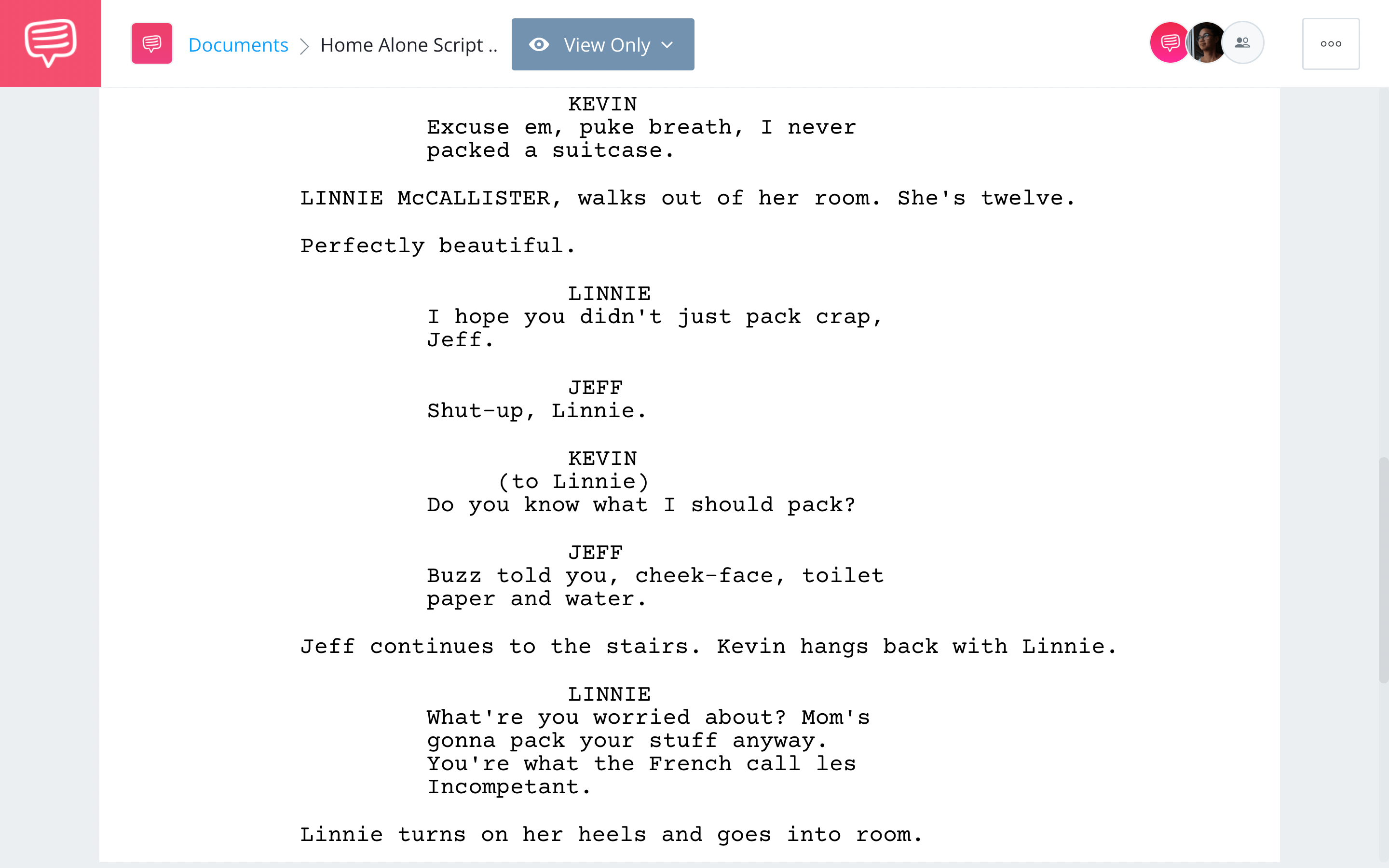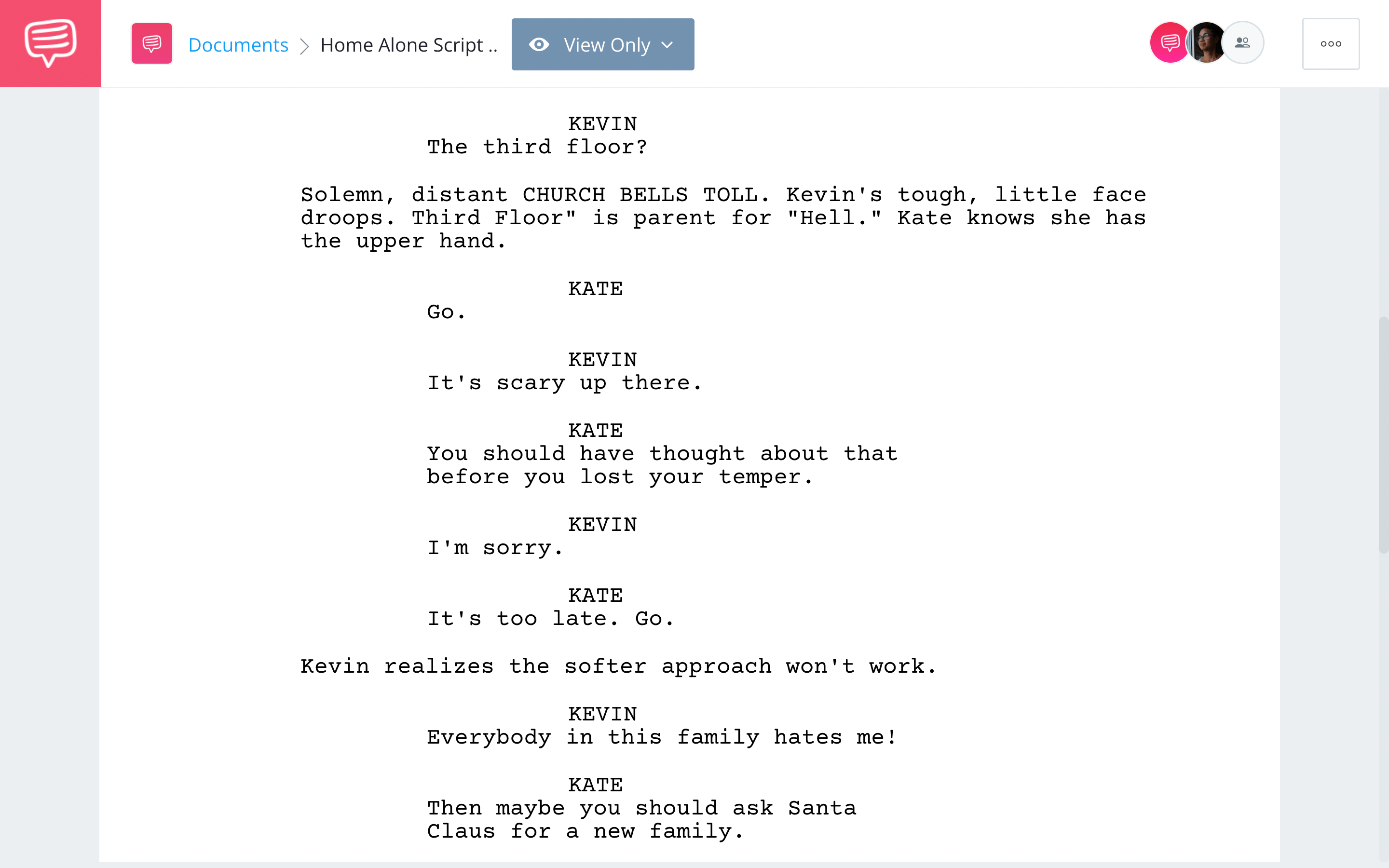It’s probably not hard to believe that Home Alone is one of the highest grossing comedies of all time. Decades after its release, it’s still a Christmas classic (and hotly contested top holiday watch). So this begs the question: when so many films lose their appeal after advances in technology and story-telling in general, how is it that Home Alone still holds up? Most if not all amazing films start with a brilliant script, and the Home Alone screenplay is no exception. Let’s delve into how this hero’s journey has stood the test of time.
WHO WROTE Home Alone?
Written by John Hughes
A director, producer, and screenwriter, John Hughes is credited with creating some of the most beloved films in American film history (including The Breakfast Club, Pretty in Pink, and Ferris Bueller’s Day Off… to name very few). While he was an avid film consumer since his adolescence, Hughes bounced from marketing to comedy writing to magazine contributor before establishing himself in the mid-'80s as a leading coming-of-age film writer/director.
STORY BREAKDOWN
STRUCTURE OF HOME ALONE SCREENPLAY
Here is the story structure for Home Alone screenplay:
Exposition
The McAllister family prepares for a Christmas trip to Paris. A cop with a gold tooth tries to extract info from them, and Kevin McAllister is a nuisance to his family. Kevin, established as our protagonist, is banished to the attic for misbehaving.
Inciting Incident
A storm leaves the home without power, which culminates in a faulty headcount as the family preps to leave for the airport; Kevin is home alone.
Plot Point One
Kevin’s mother realizes, mid-flight, that they left Kevin home. She must find a way to get to Kevin and ensure his safety.
Rising Action
Marvin and Harry (the gold-toothed “cop”) plot out their scheme of robbing homes in the neighborhood. Kevin parties solo, and becomes self-sufficient (like buying groceries, and overcoming his fear of the furnace). He also rigs his home in such a way that he can outwit Marvin and Harry as they try to burgle his home.
Midpoint
Kevin realizes he does want his family to come home. He says he will never be a pain in the butt again.
Plot Point Two
Kevin takes control of his situation, and rigs his home in an attempt to outwit Marvin and Harry.
Build Up
Harry, Marvin, and Kevin face off as the burglars fall into Kevin’s traps.
Climax
Kevin appears to be caught by the burglars. Old man Marley saves Kevin by smashing the burglars heads with a shovel. Marvin and Harry are arrested.
Finale
Kevin’s family returns — he has survived being home alone.
Home Alone Script Takeaway #1
Home Alone is a Hero’s Journey
Home Alone is a timeless story about the descent into the darkness (yes, it’s a comedy, but for Kevin, the element of fear is still very much present). Kevin, an eight-year-old boy, is our protagonist. Once his family leaves without him, he is forced to face not just his own flaws, but also the unknown.
Therefore, he must summon courage in order to answer a call to adventure, as is typical for a hero’s journey.
Though it may not be a cut-and-dry example of the hero’s journey (perhaps there is no mentor, for example), Kevin McAllister’s experience does very much fit into a version of that tried and true story structure. In fact, the Home Alone screenplay even fits into similar structures that are influenced by the hero’s journey. For instance, in the video below, you can see how Kevin’s journey fits into Dan Harmon’s Story Circle methodology.
Home Alone and Dan Harmon’s Story Circle
As you can see, the hero’s journey is a common structure for some of our favorite John Hughes movies. As such, it stands to reason that the Home Alone screenplay checks many of the hero’s journey boxes. This shouldn't be a surprise considering it's a direct remake of Die Hard (wink, wink).
Home Alone is Die Hard for kids • Subscribe on YouTube
One main similarity being that there is the differentiation between the two worlds: the special world and the ordinary world, both of which our hero champions (by way of answering the call to adventure, meeting allies and enemies, and overcoming ordeals) by the end of the narrative.
A moment that shows Kevin has mastered both worlds occurs at the end of the Home Alone script. This is when the McAllisters return from Paris and he reunites with his mother. We imported the Home Alone script to StudioBinder’s screenwriting software to take a deeper look.
McAllisters Return Home • Read Full Scene
Not only is there a mirror image of the face off between mother and son (we saw this in the beginning of the script when Kevin goes to the attic and tells Kate he doesn’t care if he sees her or his family ever again), but we witness a moment of reversal and clear evolution in character. For one, Kate realizes she owes Kevin an apology; he has gained her respect. For another, Kevin “squeezes for all he’s worth” when he hugs Kate, showing that he has also learned the importance of family.
In facing the trials of being home alone, confronting the burglars, and learning of his true need (for family), Kevin has demonstrated the hero’s journey. He has gained independence and learned his lesson, and thus he has “returned with the elixir.”
Home Alone Script Takeaway #2
Deep meaning in the Home Alone script
We can of course sum up the message of Home Alone to “be careful what you wish for.” But as we dig deeper into more nuanced moments of character flaws and growth, we uncover a deeper meaning within. The Home Alone screenplay teaches us about independence, resourcefulness, and the importance of family. It also teaches us about loneliness itself.

Home Alone, 1990
The answer is in the title: we know this story is about a boy who is home alone, and we understand that the premise of the script revolves around a boy who is left behind while his family goes on a trip to Paris. Kevin is literally alone with no adult supervision. But there is more to it than that.
While Kevin does master both worlds, he is also alone in both the beginning and end of the script (even if the nature of that loneliness shifts). Let’s take a look at the beginning of the Home Alone script.
The McAllisters pack for Paris • Read Full Scene
This is one example of many in which the McAllister family alienates Kevin: they insult and belittle him, in addition to not taking him seriously. They don’t believe that he, a little kid, could be capable and in fact, perpetuate that narrative when they continue to treat him this way. It is only when Kevin is literally alone that he is free to access his own agency.
In this way, Kevin’s ordinary world is full of people… but he still feels alone, which hurts him, but also makes him eager to prove himself.
Similarly, at the end of the script, Kevin has a touching reunion with his mother. And surely the rest of the McAllisters understand that he should not have actually been left alone. That being said, the shift within Kevin’s own character allows him to find acceptance of the replenished rivalry between him and his relatives. They still treat him like a kid, but Kevin (though he has known his worth all along) has gained new perspective on what it means to be lonely, and therefore can cope with it.
The Home Alone script teaches us that even if we aren’t left alone in a giant home with burglars, there are actually countless ways to be lonely and to make someone feel lonely.
Home Alone Script Takeaway #3
Home Alone is timeless
Defeating bad guys, saving the day, and essentially being able to party in a giant mansion without your parents is probably most kids’ dream come true at some point in their lives. Kevin’s story is a classic example of wish fulfillment, even if it does go wrong.
However, as we mentioned earlier, seeing our hero overcome obstacles is what makes stories like these so rich. The obstacles seem insurmountable, and ergo, highly engaging for audiences, especially when we know our hero will survive.
For this reason, the Home Alone script is timeless. It follows thrilling adventures, stars a loveable protagonist, functions in a familiar story structure, and ends in a lesson learned laced in triumph. Regardless of decade, the heart of the story is relatable, and the circumstances of the loneliness Kevin faces is something most children and adults alike will face in their lives.
Holiday films tend to evoke a sense of nostalgia, which as an emotion tends to fall somewhere between pleasant and painful. It’s complicated, even if ultimately heartwarming. Being that Home Alone is a Christmas movie, we are forced to reengage with our younger selves to put ourselves in Kevin’s shoes.
As we grow older, we understand and function within time differently, but we can almost always tap into our inner child. In particular, the relationships between characters aid the holiday movie-nostalgia effect. In this scene, it reads like it could have come from any one of our childhoods.
Kevin is Punished Scene • Read Full Scene
We know that Kevin and his relatives don’t see eye-to-eye. The sibling rivalries are intended to make Kevin feel small. What’s more, the relationship Kevin has with his mother is likely familiar as well; everyone has an extent to which they love their parent, but they also are likely familiar with realizing their lack of power as a child.
In this scene, Kate capitalizes on her power as the parent, and tying it into the “most wonderful time of the year,” she wields that power in a way that pushes Kevin over the edge (another feeling most of us as children may have felt).
The Home Alone script is layered with gags, jokes, and general calamity, but it also inundates its hero’s quest with hope and the ability to prove himself. It’s a familiar tale, not just because we recognize it in other films, but because we recognize it in our own lives.
For this reason, Home Alone stands the test of time and shows how wonderfully intricate and meaningful even the most riotous stories can be.
Related Posts
UP NEXT
Read and download more scripts
The Home Alone script is as good as screenwriting gets. If you want to continue reading screenplays, we have scripts and analyses for other holiday titles like National Lampoon’s Christmas Vacation, A Christmas Story , and Die Hard in our screenplay database. Browse and download PDFs for all of our scripts as you read, write and practice your craft to become the next great screenwriter.
